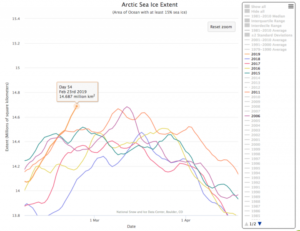by Y, S., Zheng et al., 2018, Marine Micropaleontology, in CO2Science
According to Yuan et al. (2018), “studies examining sea surface temperature variability over the past one century and their influence on climate change in China are seriously lacking.” And therefore, in an effort to remedy this information void, the team of eight Chinese scientists developed “the first tree-ring-based dendroclimatic sea surface temperature (SST) reconstruction for the South China Sea.”
In accomplishing their objective Yuan et al. cored 22 Pinus massoniana trees in the Changting Region of the Fujian Province, China. Analysis of the cores revealed a statistically significant relationship between the tree-ring series and gridded March SSTs (1°C resolution) of the South China Sea (16-20°N, 112-116°E). Ultimately, this relationship enabled them to produce a proxy temperature reconstruction over the period 1893-2011, which reconstruction is shown below.
…

